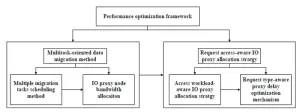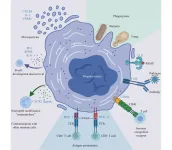Subtle changes in the brain, detectable through advanced imaging, blood and spinal fluid analysis, happen approximately twenty years before a clinical motor diagnosis in people with Huntington’s disease, finds a new study led by UCL researchers.
The research, published in Nature Medicine, was in collaboration with experts at the Universities of Glasgow, Gothenburg, Iowa, and Cambridge.
The team found that although functions such as movement, thinking or behaviour remained normal for a long time before the onset of symptoms in Huntington’s disease, subtle changes to the brain were taking place up to two decades earlier.
These findings pave the way for future preventative clinical trials, offer hope for earlier interventions that could preserve brain function and improve outcomes for individuals at risk of Huntington’s disease.
Huntington’s disease is a devastating neurodegenerative condition affecting movement, thinking and behaviour. It is a genetic disease and people with an affected parent have a 50% chance of inheriting the Huntington’s disease mutation, meaning they will develop disease symptoms – typically in mid-adulthood.
The disease is caused by repetitive expansions of three DNA blocks (C, A and G) in the huntingtin gene. This sequence tends to continually expand in certain cells over a person’s life, in a process known as somatic CAG expansion. This ongoing expansion accelerates neurodegeneration, making brain cells more vulnerable over time.
For the new study, the researchers studied 57 people with the Huntington’s disease gene expansion, who were calculated as being on average 23.2 years from a predicted clinical motor diagnosis.
They were examined at two time points over approximately five years to see how their bodies and brains changed over time. Their results were compared to 46 control participants, matched closely for age, sex and educational level.
As part of the study, all participants volunteered to undergo comprehensive assessments of their thinking, movement and behaviour, alongside brain scans and blood and spinal fluid sampling.
Importantly, the group with Huntington’s disease gene expansion showed no decline in any clinical function (thinking, movement or behaviour) during the study period, compared to the closely matched control group.
However, compared to the control group, subtle changes were detected in brain scans and spinal fluid biomarkers of those with Huntington’s disease gene expansion. This indicates that the neurodegenerative process begins long before symptoms are evident and before a clinical motor diagnosis.
Specifically, the researchers identified elevated levels of neurofilament light chain (NfL), a protein released into the spinal fluid when neurons are injured, and reduced levels of proenkephalin (PENK), a neuropeptide marker of healthy neuron state that could reflect changes in the brain’s response to neurodegeneration.
Lead author, Professor Sarah Tabrizi (UCL Huntington’s Disease Research Centre and UK Dementia Research Institute at UCL), said: “Our study underpins the importance of somatic CAG repeat expansion driving the earliest neuropathological changes of the disease in living humans with the Huntington’s disease gene expansion. I want to thank the participants in our young adult study as their dedication and commitment over the last five years mean we hope that clinical trials aimed at preventing Huntington’s disease will become a reality in the next few years.”
The findings suggest that there is a treatment window, potentially decades before symptoms are present, where those at risk of developing Huntington’s disease are functioning normally despite having detectable measures of subtle, early neurodegeneration. Identifying these early markers of disease is essential for future clinical trials in order to determine whether a treatment is having any effect.
Co-first author of the study, Dr Rachael Scahill (UCL Huntington’s Disease Research Centre and UCL Queen Square Institute of Neurology) said: “This unique cohort of individuals with the Huntington’s disease gene expansion and control participants provides us with unprecedented insights into the very earliest disease processes prior to the appearance of clinical symptoms, which has implications not only for Huntington’s disease but for other neurodegenerative conditions such as Alzheimer’s disease.”
This study is the first to establish a direct link between somatic CAG repeat expansion, measured in blood, and early brain changes in humans, decades before clinical motor diagnosis in Huntington’s disease.
While somatic CAG expansion was already known to accelerate neurodegeneration, this research demonstrates how it actively drives the earliest detectable changes in the brain—specifically in the caudate and putamen, regions critical to movement and thinking.
By showing that somatic CAG repeat expansion changes measured in blood predicts brain volume changes and other markers of neurodegeneration, the findings provide crucial evidence to support the hypothesis that somatic CAG expansion is a key driver of neurodegeneration.
With treatments aimed at suppressing somatic CAG repeat expansion currently in development, this work validates this mechanistic process as a promising therapeutic target and represents a critical advance towards future prevention trials in Huntington’s disease.
Co-first author of the study, Dr Mena Farag (UCL Huntington’s Disease Research Centre and UCL Queen Square Institute of Neurology) added: “These findings are particularly timely as the Huntington’s disease therapeutic landscape expands and progresses toward preventive clinical trials.”
Funding for this work is from Wellcome and the CHDI Foundation. The research was also supported by the National Institute for Health and Care Research (NIHR) Biomedical Research Centre at UCLH, and involved the NIHR Clinical Research Facility at UCLH.
Professor Sarah Tabrizi will be discussing this research and its implications with Jenna Heilman from the HD Youth Organisation (HDYO) in a film ‘Breaking Down Barriers’ released on Tuesday 21st January 2025.
END



